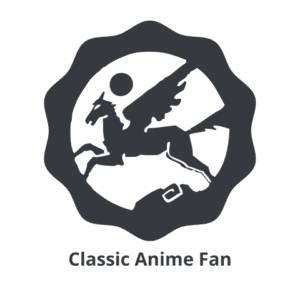The anime and manga series “Saint Seiya,” created by Masami Kurumada, is a prime example of how mythology can be seamlessly integrated into a modern narrative.
By drawing from a wide range of mythological traditions, including Greek, Norse, Chinese, Buddhist, Christian, Hindu, and elements of astrology and alchemy, Saint Seiya weaves a rich and captivating narrative that resonates with audiences of all backgrounds.
It exemplifies how mythology continues to inspire and shape modern storytelling, offering a timeless exploration of the human experience through the lens of ancient legends and beliefs.
Mythology has long been a source of inspiration for art, literature, and popular culture. It weaves together stories of gods, heroes, and mythical creatures, providing a rich tapestry of themes and archetypes that resonate with the human experience.
In this article, we will explore how “Saint Seiya” draws from various mythological traditions, creating a captivating and immersive world. It also makes refference to literature (for example, Camus’ name is inspired by Albert Camus, famous writer).
1. Greek Mythology: The Foundation of Saint Seiya
At the heart of “Saint Seiya” lies a strong connection to Greek mythology. The series revolves around the concept of the “Cloths,” which are armors worn by the legendary Bronze, Silver, and Gold Saints.
These Cloths are named after constellations and draw inspiration from the zodiac, directly tying into Greek mythology’s rich constellation lore.
The Saints themselves take on the roles of modern-day Greek heroes, standing as the champions of the goddess Athena, who is central to the series.
Pegasus Seiya, for instance, channels the heroic spirit of Perseus, while Dragon Shiryu embodies the might of the Dragon constellation, echoing the story of the hero Heracles.
The battles and conflicts in “Saint Seiya” often mirror the epic struggles of Greek myths, reinforcing the timeless themes of heroism and sacrifice.
2. Norse Mythology: The Asgard Arc
In the Asgard Arc of “Saint Seiya,” Norse mythology takes center stage. The Gold Saints venture to the frozen lands of Asgard, encountering deities such as Odin and the valkyries.
This arc introduces a new set of godly adversaries inspired by the Norse pantheon, expanding the series’ mythological scope. Read 5 ways the Asgard Arc could be better.
The character Hilda, who is possessed by the spirit of the frost giantess Skuld, adds depth to the narrative by embodying the conflict between duty and destiny, a theme prevalent in Norse mythology.
3. Chinese Mythology: The Azure Dragon and the Hades Arc
The Azure Dragon Saint, Shiryu, and his connection to the constellation Azure Dragon reflect the influence of Chinese mythology in “Saint Seiya.“
The series borrows from the symbolism of the Four Symbols of Chinese mythology, representing the cardinal directions, and integrates these motifs into the characters’ abilities and storylines.
Furthermore, Ohko, a filler character exclusive from the manga, is protected by the Tiger constellation, exclusive form the chinese astrology.
4. Buddhism Mythology: Saga and Rebirth
The intricacies of life, death, and the cycle of rebirth are central to the narrative, reflecting Buddhist concepts of karma and the afterlife.
The character Shaka, the Virgo Gold Saint, embodies the Buddhist principles of enlightenment and inner peace, contrasting with the darkness and suffering present in the Underworld.
5. Christian Mythology: The Sanctuary and the Pope
The Sanctuary, a central location in “Saint Seiya,” is heavily influenced by Christian mythology. The Golden Saints serve the goddess Athena and are led by the Pope, who carries strong religious symbolism.
The series explores themes of faith, divine intervention, and the battle between good and evil, akin to Christian narratives.
The character of the Pope, who holds a pivotal role in the story, embodies the complexities of religious leadership and the moral dilemmas often associated with it. His actions and motivations are shrouded in mystery, adding depth to the storyline.
Furthermore, we have the character Hyoga, who is presented as being a christian (probably an orthodox, since he used to live in Siberia).
We also have the famous fourth Saint Seiya movie, which presents none other than Lucifer as the main villain. It’s not canon, but worth to watch.
6. Hinduism Mythology: The Concept of Cosmos and Reincarnation
The concept of the “Cosmos” in “Saint Seiya” is reminiscent of Hindu cosmology, where the universe is seen as a harmonious interplay of forces.
The series presents a world where individuals can harness their inner Cosmos to perform incredible feats, echoing the idea of tapping into one’s spiritual energy and potential.
The theme of reincarnation is also prevalent in the series, mirroring the Hindu belief in the cycle of birth, death, and rebirth.
7. Astrology and Alchemy: The Constellations and Transmutation
The concept of the constellations and astrology plays a significant role in “Saint Seiya.” Each Cloth is named after a zodiac constellation, and the strengths and abilities of the Saints are often linked to these celestial bodies.
This intertwining of astrology with the characters and their powers enriches the mythological backdrop of the series.
Furthermore, the principles of alchemy, which involve the transformation of base materials into something greater, are explored through the process of obtaining and repairing Cloths.
This alchemical theme underscores the idea of personal growth and self-improvement, which is a central theme in “Saint Seiya.”

